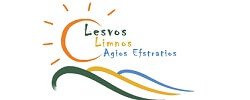Many wild animals and birds find shelter in the olive groves and the forests of pine trees and oak trees of Lesvos. In your tour in the countryside of the island you may meet a red fox or a weasel, or even a “Galia”, as the locals call the Caucasian Squirrel.
In Greece and Europe, the Caucasian Squirrel (Sciurus anomalus) lives only on Lesvos which is the western end of this species’ spreading. The most populated areas are the chestnut forest of mount Olympos, the olive groves and tree growing areas, as well as the oak forests and the pine forests to a smaller extent.
An important reptile species is the Starred Lizard (Agama stelio), while the vernal ponds and giolia (local name for the cisterns for watering the animals) support significant populations of amphibians and water turtles (mainly Mauremys caspica, more rarely Emys orbicularis).
A very interesting ecosystem is the coastal wetlands of the Gulf of Kalloni, including, besides the gulf, a large number of wetlands: the salt pans of Kalloni and of Polichnitos, saltmarshes, streams and their estuary, reed beds, a pine wood and olive groves.
Among the most interesting flying residents is the pink flamingos, many species of herons, the stilt, the glossy ibis, the kingfisher, the common redshank and the avocet. Lesvos is the only insular area where the Black Stork (Ciconia nigra) nests, the only place in Europe where the Krüper’s nuthatch (Sitta krupperi) lives and here you will find the largest European population of Cinereous Bunting (Emberiza cineracea). Ruddy Shelducks (Tadorna ferruginea), a species of Asian origin, of the most significant on the island, are permanent residents and their main reproduction locations are found in the salt pans of Kalloni, the wetland of Messa in Agia Paraskevi and in the area of Aspropotamos-Palios of Mandamados. Another interesting species is the Chukar (Alectoris Chukar), which is raised also as a hunting prey.
The Audouin’s gull (Larus audouinii), a worldwide endangered species, nests and is reproduced at Lesvos’ rocky islets. On Lesvos you will also meet Eleonora’s Falcon (Falco eleonorae) and Lesser Kestrel (Falco naumanni), worldwide endangered species which still survive in small numbers, nesting in rocky islets.
That’s why Lesvos is one of the most important destination of birdwatchers in Europe, who visit by numbers the island on spring and autumn to admire and capture with their cameras these rare feathered visitors!


 Greek
Greek







